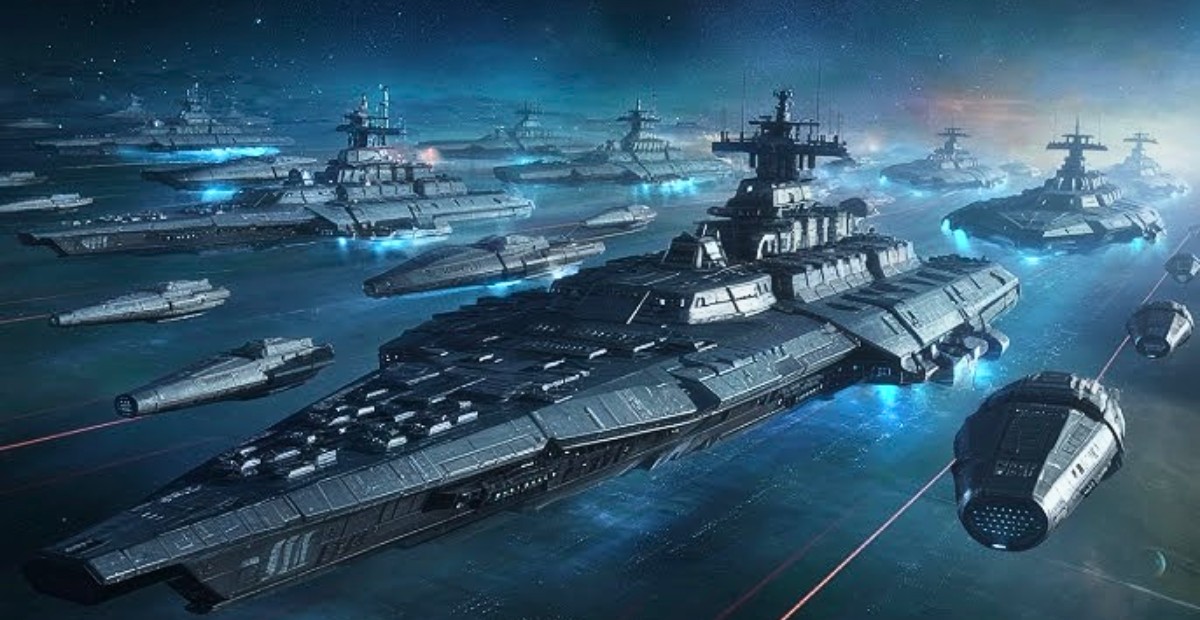Have you ever noticed how space battles in Star Wars always seem so orderly? All the ships are perfectly aligned, facing the same way, and fighting in neat formations.
If you’re like me, you might wonder, “Wouldn’t it make sense to have ships flying at all angles, maybe even upside down?” It seems more realistic, right?
But as cool as it sounds, there are a few reasons why Star Wars space fights look the way they do. Let’s break it down.
It’s All About the Cinematics
First, it’s no secret that Star Wars is about delivering an epic visual experience. One of the main reasons space battles are laid out so neatly is for us, the viewers.
If ships were flying around in every possible direction, the screen would look chaotic, and it’d be hard to follow the action.
By keeping ships aligned, the filmmakers ensure that battles remain visually clear and easy to understand.
Think about it like this: when watching these battles, we need to know who’s fighting who, where they’re positioned, and what’s going on with the rest of the fleet.
Having a more straightforward, organized setup helps us follow the story. The “rule of cool” applies here – what looks good often takes precedence over strict realism in the Star Wars universe.
Borrowing from History: Naval Combat and WWII Dogfights
Another reason Star Wars space battles look so orderly is that they’re inspired by historical military tactics.
George Lucas himself has talked about how the space fights in the original trilogy were modeled after WWI & WWII dogfights.
The way the ships move and attack in formation mimics how real-life naval fleets operate.
In naval combat, ships stay in formation to coordinate their movements, protect key vessels, and focus fire on enemies.
This orderly approach makes it easier for commanders to give directions, and for fleets to move as a unit.
Similarly, in Star Wars, star destroyers and rebel ships stay in formation for the same reason.
It’s easier to coordinate a fleet if all your ships are aligned the same way and facing the same direction.
This connection to naval combat also adds a layer of intimidation, especially with the Empire’s fleets.
There’s something visually powerful about seeing a massive armada of star destroyers all lined up, evoking a sense of military precision and overwhelming force.
Hyperspace Routes and Galactic Orientation
In the Star Wars galaxy, hyperspace routes also play a role in how ships are positioned. Ships often emerge from hyperspace already aligned in a specific way, based on the routes they took.
These hyperspace lanes, like roads in space, help keep ships organized and pointed in the same general direction.
In addition to hyperspace, ships tend to align themselves based on planetary gravity or the galactic plane.
While this isn’t explicitly stated in the movies, it makes sense when you think about it.
Planets have gravity, and ships orbiting or near a planet would naturally align themselves with the planet’s pull.
The galaxy itself has a disc-like shape, so fleets would orient themselves in relation to that plane.
All of this helps keep battles from becoming disorienting, both for the ships’ crews and for us as viewers.
Tactical Coordination and Practicality
Let’s not forget that there are tactical reasons for this neatness too. Keeping ships in formation is just easier to manage.
When ships are all facing the same direction, it simplifies navigation and coordination. Commanders can give clearer orders, and ships can move together more effectively.
Imagine trying to manage a fleet where every ship is flying at different angles, communication and teamwork would get chaotic fast.
This is especially true in battles involving large capital ships like star destroyers, which need to maintain their firing arcs and avoid collisions.
Keeping everyone on the same page, or in this case, on the same plane, just makes sense.
Plus, many ships in Star Wars have key systems like hangar bays and heavy weapons positioned on the top or bottom.
Keeping ships oriented the same way ensures that hangar operations and weapon firing arcs are aligned properly.
For example, a star destroyer’s hangar bay is located on the underside, so having all the ships facing the same way helps streamline operations and prevents ships from crashing into each other during launches and landings.
Thrawn’s Tactics: When Unorthodox Methods Work
Now, while most space battles follow the neat and tidy pattern, there are moments when ships break from that tradition.
In The Clone Wars, we see ships at different angles during battles, particularly when they’re trying to gain a tactical advantage.
Grand Admiral Thrawn is famous for using unconventional tactics, like positioning his ships at odd angles to confuse or outmaneuver enemies.
One notable example is when Ahsoka uses a Venator-class ship to shield smaller ships from enemy fire by positioning it sideways.
These kinds of maneuvers are rare but highlight that, even in Star Wars, there’s room for creativity in space combat. But overall, these unorthodox tactics are exceptions rather than the rule.
Final Words
In the end, the reason space battles in Star Wars are so neatly laid out comes down to a mix of cinematic needs, tactical simplicity, and historical influences.
Yes, having ships fly around at different angles would be more realistic, but it would also be a nightmare for both the characters trying to coordinate their movements and the audience trying to follow the action.
Star Wars isn’t aiming for scientific realism – it’s a space fantasy that focuses on delivering exciting, epic visuals.
And for that, keeping the space fights neat and orderly works just fine.
So next time you watch a space battle, you’ll know why it all looks so perfectly arranged. It’s not just about making sense, it’s about making it fun to watch.

